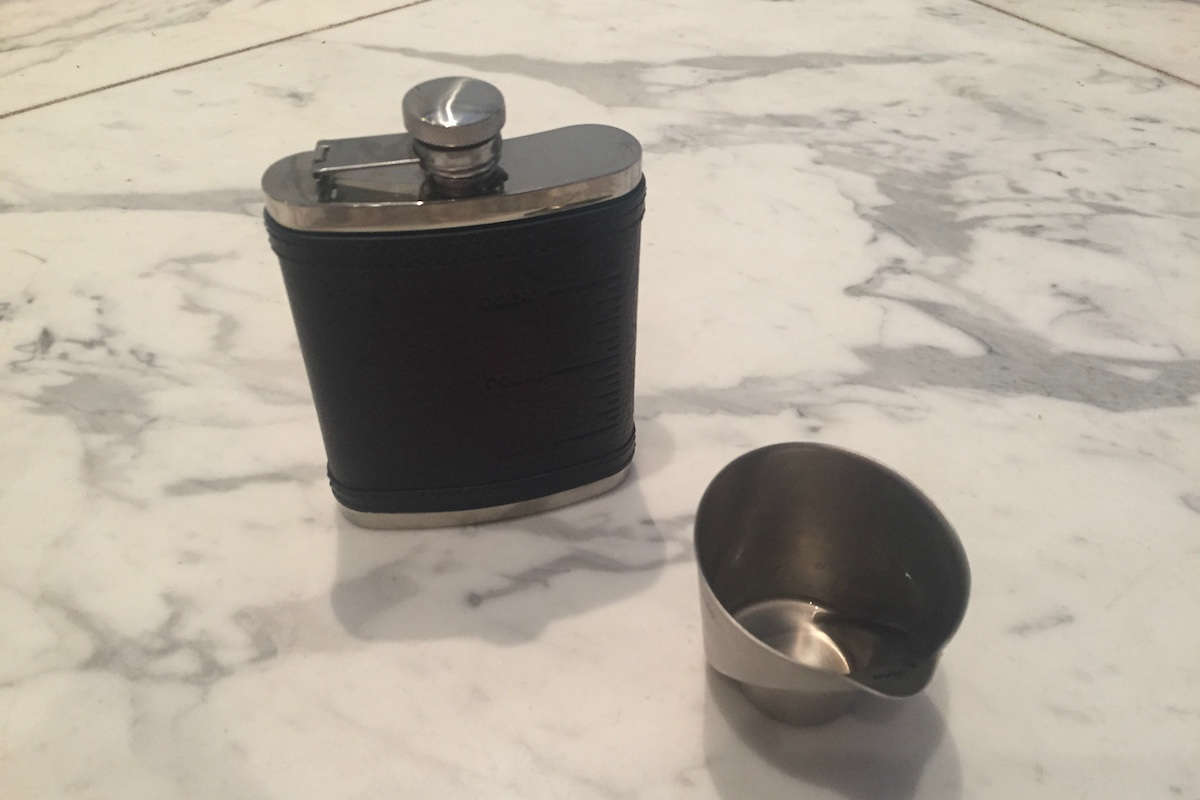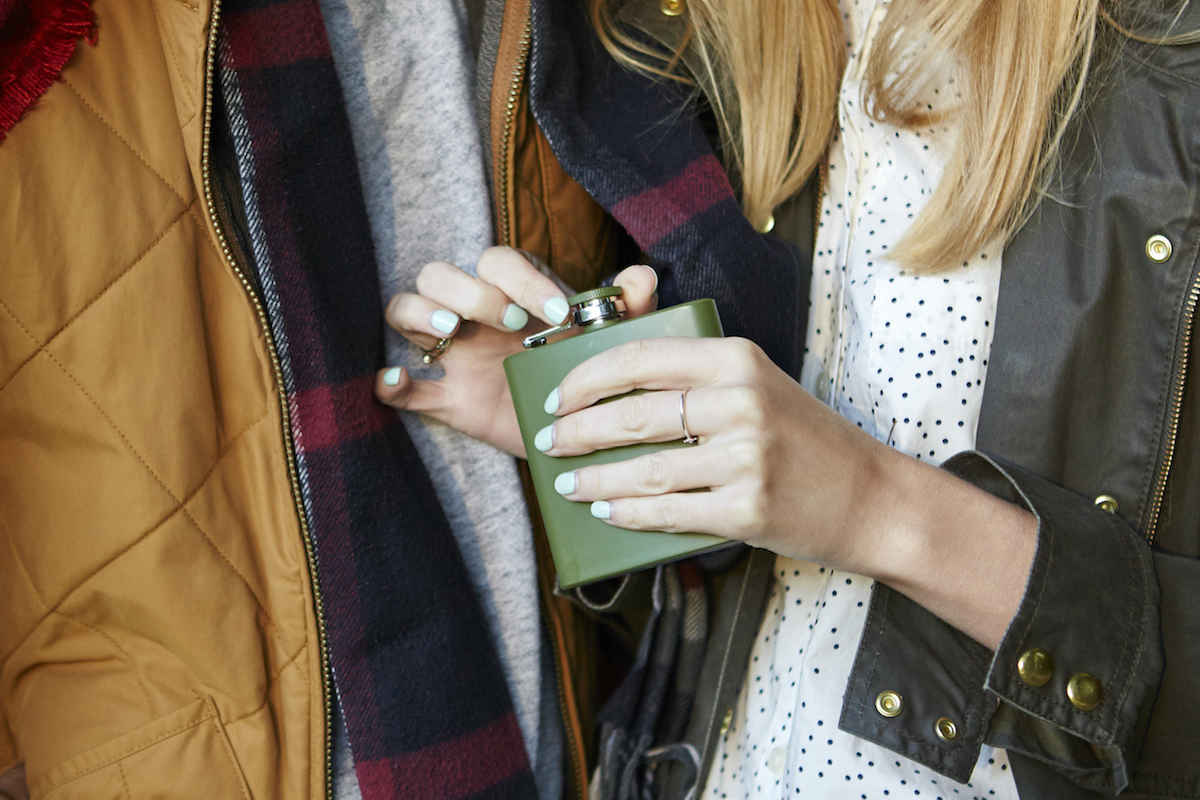As anyone who’s ever stood outside a college football stadium can tell you, draining a flask takes no particular skill or talent. But filling it up is an entirely different story.
The same minuscule mouth that allows a flask to be enjoyed with discretion also makes it difficult to fill. That old issue returned to mind when I decided to invest in a Gadsden Flag needlepoint flask from Smathers & Branson (nothing quite embodies the spirit of “Don’t Tread on Me” like circumventing our Puritanical open container laws).
This flask joined two leather-bound ones from J.Crew that I had received as gifts during the circa-2012 moment when every men’s clothing brand sold flasks. The brown and navy flasks had long been stained by sloppy pours of Old Overholt Rye or Canadian Club. I decided that I would keep my newest flask as unblemished as possible—a daunting task if I was going to be pouring Negronis into it.
Accordingly, I rounded up a few devices I thought could do the job best. Some of the items in the lineup were expected (funnel, measuring jigger) and others less so (squeeze bottle, turkey baster). The below is a semi-scientific analysis of how each performed in my quest to fill a flask with minimal spillage.
Funnel

I own a single, tiny flask funnel that came with one of the J.Crew models. The obvious advantage of the funnel is that it fits straight into the mouth of the flask, which you’d imagine would negate spillage. In addition, the funnel was by far the most portable option, fitting easily into pockets and dopp kits.
The funnel’s disadvantage was its tendency to overfill, causing spillage as it ran over. This typically happened when the funnel was simply left in the mouth of the flask during filling. I found that by using one hand to slightly raise the funnel (while keeping its spout in the flask’s mouth) the rate of the pour was more rapid, and the danger of overfilling was reduced.
Measuring Cup

Next I used a measuring cup—or, more precisely, a measuring jigger from OXO, which features a measuring cup-style mouth. I imagined that this would give me better control, as I could fill the measuring cup from the bottle separately and then pour it into the flask, rather than having to pour from bottle to flask via funnel.
I was halfway right. The measuring cup did give me better control, in much less time, than the funnel. But doing so required getting into “the groove” of pouring, and it was easy to spill at the start and finish of the pouring process before I’d found my rhythm.
Squeeze Bottle

The squeeze bottle came to mind when I first begin imagining how to pour Campari into a flask without a resulting red streak. For this purpose, I purchased a six-ounce “Soft’n Style Applicator Bottle” from Amazon.
Its tiny nozzle made the process less like a pour and more like an injection. The upside of this was that not a drop of liquid was spilled. The downside was that it took a full 60 seconds to squeeze six ounces of water into my flask.
Turkey Baster

Like the squeeze bottle, a turkey baster could be inserted directly into the mouth of a flask. I thought that its wider mouth and greater disposing power could give the proceedings that same injection-like accuracy in less time.
I was right about that projection: as soon as I got the hang of using a turkey baster, I was able to fill the flask quickly without spilling. The baster’s major drawback was that it was difficult to know precisely how much liquid it was drawing out of the bottle with each squeeze, making the chance of overflow greater. Its small size, and tendency to leak back into the bottle as it was filled, partially negated its speed advantage.
Conclusion
In the course of my experimentation, there was just one vessel that never spilled: the squeeze bottle. That factor alone makes it the winner, even with its slow pour time. The funnel narrowly beat out the measuring cup for second place, owing to the latter’s tendency to spill at the start or finish of the pour. The turkey baster, while intriguing, made filling too much of a chore.
Honorable Mention: Filling a Funnel With a Measuring Cup
I kept this out of the official running as it was a tag team rather than a solo competitor, but filling a funnel with a measuring cup proved an excellent choice. The small mouth of the measuring cup provided better control than a bottle, and its measurements overcame one of the funnel’s greatest flaws: not knowing precisely how much you’re pouring in.
Need a flask? We’ve got you covered. Just head over to the Bevvy Shop.



